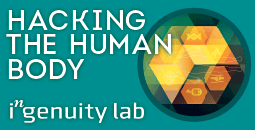Our energy future
The New Economy’s Hywel Jones speaks with Fluor’s Chairman & CEO Alan Boeckmann, Senior Group Presidents David Seaton and Steve Dobbs, and Power Business Group President David Dunning about the company’s strong track record and its commitment to sustainable development
The New Economy's Hywel Jones speaks with Fluor's Chairman & CEO Alan Boeckmann, Senior Group Presidents David Seaton and Steve Dobbs, and Power Business Group President David Dunning about the company's strong track record and its commitment to sustainable development
The New Economy is proud to feature its 2009 Best Clean Energy Company Award winner: Fluor Corporation. Factors that influenced the panel’s decision are Fluor’s leadership within the engineering and construction industry, its innovations in driving down emissions in the oil and gas and power sectors, and its remarkable growth in renewable and clean energy markets, such as polysilicon, wind, nuclear and others.
Fluor designs, builds and maintains many of the world’s most challenging and complex projects. Through its global network of 45 offices on six continents, the company’s 42,000 employees serve clients across nearly 75 countries in the chemicals and petrochemicals, commercial and institutional, government, life sciences, manufacturing, microelectronics, mining, oil and gas, power, telecommunications and transportation infrastructure industries, executing more than 1,000 projects annually. Their contributions and achievements have stimulated economic expansion and improved the quality of life for millions of people around the world. Headquartered in Texas, Fluor is a $22bn FORTUNE 115 company.
Hywel Jones: Alan, congratulations on winning this prestigious award! You beat out some impressive companies, including GE, ABB, Bechtel and Mitsubishi Heavy Industries. What do you think sets Fluor apart?
Alan Boeckmann: First of all, thank you. It is great to receive this recognition – a true honour for Fluor. Fluor has been designing and building facilities for nearly a century. The demand for power and cleaner fuels has never been greater; yet so is the need to reduce emissions and develop new sources of renewable and clean energy. We attack the clean energy issue on three different levels:
Conserve energy
We build facilities for our clients that are more energy∞ efficient and have fewer emissions, both supporting a more sustainable future.
Develop alternative energy sources
Our company is involved in developing large offshore wind farms and producing the polysilicon for photovoltaic solar panels. We have designed hydrogen-burning power plants and are working on projects in the resurging nuclear power market.
Provide cleaner conventional energy
The facilities we build produce cleaner gasoline, diesel and fuel oils for our clients. In the power arena, we utilise technologies that take CO2 (carbon dioxide), NOx (nitrogen oxides), SOx (sulfur oxides) and mercury out of power plant stack gases. Our employees design facilities to remove and recover sulfur from natural gas streams, which helps provide cleaner-burning natural gas to many countries around the world.
HJ: That is very impressive and also a lot to digest. Let’s break it down by your three different areas. What is Fluor specifically doing to help conserve energy?
Conserve energy
Steve Dobbs: About 25 percent of all CO2 emissions are created by the heating, cooling and lighting of buildings. So,
we designed Fluor’s new corporate headquarters in Dallas to be more energy efficient and meet the US Green Building Council’s Leadership in Energy & Environment Design (LEED®) certification requirements. Our company has managed the design of numerous LEED-certified buildings, most notably the world’s first Platinum LEED hospital in Abu Dhabi. In addition, our new Anchorage office is LEED certified, and our new Farnborough, UK office should be able to significantly reduce energy consumption by using new systems and technologies.
We also have voluntarily developed a global carbon footprint programme, with the support of ICF International, a leading carbon-emission consultant. Based on the data collected annually, we have examined the sources of Fluor’s emissions and have programmes underway to improve our energy efficiency.
Efficient transportation options
SD: Fluor also is building mass transit and more efficient transportation options that help to conserve energy. Today, we are managing transportation programmes totalling $10bn in construction costs. We have built major rail and road projects across both Europe and the US. Most notably, we are completing the Transportation Hub at the World Trade Center in New York City.
In the UK, we have helped install an innovative communications solution that connects all the country’s highways to offer travellers accurate, real-time information on road conditions through a variety of means including message signs, internet, mobile phones and more. All of these projects help to conserve energy.
HJ: Yes, that new UK highway communications system has saved me many hours of sitting in traffic. I didn’t know Fluor was the power behind it – thank you. How else are you conserving energy?
Energy efficiency
David Seaton: Our company has the proven experience to help clients achieve greater levels of energy efficiency, environmental compliance and realise their greenhouse gas emission∞reduction goals in the most cost-effective manner.
We are completing over 20 major oil refinery revamps around the world, more than any other contractor. These revamps help the refiner process heavier, less-expensive crude oil more efficiently, producing more transportation fuels that are cleaner burning with fewer emissions.
Fluor is helping clients examine the energy efficiency of their facilities and determine areas to reduce CO2 emissions. More clients are starting to recognise the need for and value of these audits.
Solar energy
HJ: It is good to hear that more companies are recognising this need. So tell me about the alternative energy sources that you are developing.
DS: First I’ll address solar energy. The world is constrained in its ability to produce more solar energy by the lack of high-purity polysilicon that is a central component in creating photovoltaic solar panels. We are currently trying to meet this need by designing and providing construction services on a fast∞track basis for eight different polysilicon plants located around the globe, representing about 40 percent of the world’s new polysilicon capacity. The polysilicon produced at these manufacturing facilities will provide four gigawatts of capacity by 2011. These are incredible numbers.
We also are working with some of our clients’ R&D departments to advance polysilicon production so it requires only a fraction of the normal energy required.
Wind power
SD: In terms of wind, Fluor is developing two of the world’s largest wind farms off the coasts of the England and Scotland. The English wind farm will produce 500 megawatts of power, while the Scottish wind farm could generate up to 700 megawatts by state-of-the-art turbines.
HJ: Thanks for helping us become more “green” in the UK. What about nuclear power?
Nuclear
Dave Dunning: Nuclear power is a clean energy source with no carbon emissions. We are currently performing front∞end design and preliminary procurement and construction services for a 2,700-megawatt nuclear plant in Texas, which could be the first new nuclear power generation station built in the US in nearly three decades. With a cadre of well experienced nuclear staff , Fluor has safely completed ten nuclear construction projects and is in the top tier of firms capable of engineering, procuring and constructing nuclear projects worldwide.
Hydrogen fuel
DS: Clean-burning hydrogen fuel is another interesting area. Fluor has provided front-end design services for the innovative decarbonised fuel programme called the Hydrogen Energy California Project. The project would use petroleum coke to manufacture hydrogen for power generation. At the same time, about two million tons of CO2 per year would be captured and used for enhanced oil recovery at the nearby Elk Hills oil field.
Cleaner conventional energy
HJ: Let’s move on to talk about how you provide cleaner “conventional energy.” What are the specifics?
DS: Natural gas and liquefied natural gas (LNG) provide an excellent source of clean-burning energy. Fluor’s strong gas-processing capabilities stretch back to 1975 when we performed the huge $5bn Saudi Arabian Gas Programme. Today, we are helping countries have greater access to this clean fuel by performing gas processing projects in six countries around the world. We currently are performing LNG-related projects in seven countries. For example, in Mexico, we performed the design, construction and start-up of its first LNG terminal where temperatures reach 160ºc.
Clean natural gas
DS: Fluor also has worked on a number of studies for alternative pipelines that would bring more clean-burning natural gas from Alaska to Canada and the lower 48 United States.
We were recently awarded the front-end design of an associated gas-treating plant that would remove CO2, water hydrogen sulfide and other impurities from the gas. It would be the world’s largest gas-treatment plant of its kind. The proprietary Fluor SolventSM gas-processing technology is being considered for this Denali pipeline option.
HJ: That sounds like promising news.
DS: It is good news. In addition, Fluor has leading technologies to help recover sulfur that is extracted out of natural gas and refinery fuel gas streams. We are currently performing the design of the world’s largest sulfur recovery plant in Abu Dhabi and have just completed a major plant in Canada.
Clean fuels from refineries
HJ: Natural gas is certainly an efficient fuel but isn’t always available where we want to use it.
DS: We also try to ensure that your car is burning the cleanest petrol available. Fluor is the world’s leading designer of new and revamped clean-fuel production facilities, having captured the majority of the market in North America over the last 10 years. This expertise allows us to reduce the sulfur content of gasoline and diesel and produce fuels to comply with tightening regulations. We are using this experience to execute clean-fuels projects in Canada, the Middle East, Russia, Spain and South Africa.
Supercritical coal-fired power
HJ: I am glad you are looking after the petrol for my car. Now what are you are doing to help make large coal reserves a more acceptable fuel?
DD: Fluor is building supercritical coal-fired power units, which operate at increasingly higher temperatures and pressures to achieve greater efficiencies than conventional coal-fired plants. We are currently completing the design and construction of a plant in Texas that will have among the lowest SOx, NOx and mercury emissions in the US and will be 75 percent cleaner than the average US coal-fired plant.
NOx and SOx reduction
HJ: How do you reduce the emissions so significantly?
DD: We are working to reduce three of the proposed contributors to climate change: NOx, SOx and CO2.
In terms of NOx and SOx, we use two emission-reduction technologies at power projects we build. The first technology is selective catalytic reduction, which removes NOx from power plant stack gases. We have installed this technology at plants with a total capacity of 33,000 megawatts and are presently working on plants that will add another 6,000 clean megawatts to the world’s infrastructure. To remove SOx, we use a technology called flue gas desulfurisation, which to date has been installed on plants with a total capacity of nearly 18,000 megawatts, and we are working to add another 4,500 megawatts of cleaner energy to the grid in the near future.
CO2 reduction
DD: Roughly one-third of US carbon emissions come from power plants burning coal and natural gas. However, over the past 25 years, we have licensed our proprietary and commercially proven Econamine FG+ CO2-capture technology for more than 35 applications. This technology creates a secure, affordable and dependable low-carbon power generation solution using fossil fuels as a fuel source. Econamine FG Plus is a demonstrated post-combustion carbon capture technology that can assist power generation companies to substantially reduce their emissions, thereby making the coal fuel option a clean and cost-effective energy source..
Conclusion
HJ: Thank you, gentlemen. Fluor has a very impressive clean energy story to tell.
AB: Well again, I’d like to thank The New Economy for selecting Fluor as its 2009 Best Clean Energy Company Award winner. Our 42,000 employees are working hard to take on the toughest projects and transform the world’s energy infrastructure so it’s cleaner and more efficient. Hywel, thank you for taking the time to meet with us and allowing us to tell you the Fluor story.
HJ: It has been my pleasure. Congratulations!
Further information: www.fluor.com













